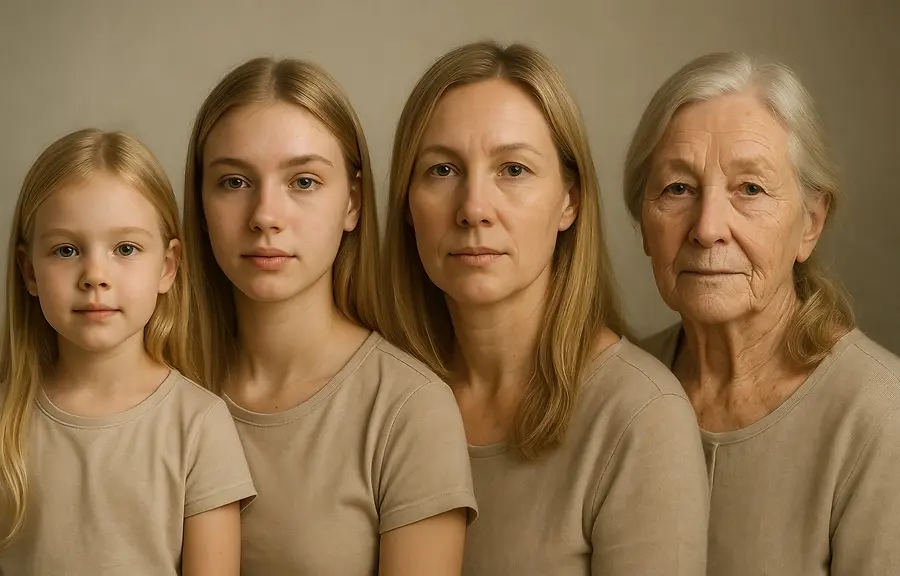The Connection Between Childhood Trauma and Adulthood
Transforming Childhood Wounds into Wisdom: A Journey of Healing and Resilience

I. Introduction
I am honored to speak to you today—not just as a life coach, but as a woman who believes deeply in healing, truth-telling, and transformation. Today we will shed light on something that often lives in the shadows of our stories: childhood trauma. Trauma is a psychological and emotional response to deeply distressing or disturbing experiences. These early wounds—whether loud or quiet, visible or invisible—can shape how we see ourselves, how we relate to others, and how we move through the world.
Yet many of us carry these wounds without language, without validation, and without support. Studies show that approximately 25% of children in the United States have experienced trauma. This is not just data—it is the reality for many of us. It is part of my story as well. This is why this conversation matters.
My hope is that this message brings clarity, compassion, and a sense of shared strength as we explore how childhood trauma echoes into adulthood—and how healing is not only possible, but profoundly powerful.
II. Types of Childhood Trauma
Childhood trauma is not one-size-fits-all. It takes many forms, each leaving its own imprint.
- Acute trauma stems from a single overwhelming event, such as a car accident, natural disaster, or sudden loss.
- Chronic trauma results from repeated exposure to distress—ongoing abuse, neglect, or instability.
- Complex trauma arises in relationships where safety and love should have been present but weren’t, often involving long-term harm by caregivers.
Common categories of childhood trauma include:
- Physical abuse: Inflicted harm such as hitting, burning, or other physical violence.
- Sexual abuse: Any sexual activity forced upon a child.
- Emotional abuse: Criticism, humiliation, rejection, manipulation, or threats.
- Neglect: Failure to provide food, shelter, clothing, safety, or medical care.
- Household dysfunction: Substance abuse, mental illness, domestic violence, incarceration, or divorce within the home.
- Natural disasters: Hurricanes, earthquakes, floods, or wildfires.
- Community violence: Gun violence, gang activity, bullying, unsafe neighborhoods.
Understanding these categories helps us name our experiences without minimizing them. Naming is the first courageous step toward healing.
III. Psychological and Emotional Impact
The effects of childhood trauma do not disappear simply because we grow up. Instead, they often resurface as:
- Anxiety or depression
- Emotional numbness
- Hypervigilance
- Difficulty trusting others
- A deep sense of unworthiness
- Perfectionism or people-pleasing
- Fear of abandonment or rejection
These are not character flaws—they are survival responses.
Neuroscience shows that trauma changes brain wiring. The amygdala becomes hyperactive, always scanning for danger. The prefrontal cortex—the part responsible for reasoning and decision-making—may become impaired. We may overreact, shut down, or feel emotionally overwhelmed. Not because we are broken, but because our brains adapted to protect us.
Research also shows:
- Adult survivors of complex trauma often struggle to process what they survived.
- Anxiety and depression are common long-term effects.
- There is increased risk for fibromyalgia, autoimmune issues, and chronic pain.
- Unmet childhood needs often lead to unhealthy relationship patterns in adulthood.
With awareness comes compassion—and with compassion comes healing.
IV. Behavioral and Relational Patterns in Adulthood
Trauma lives not just in our memories, but in our patterns.
Adults who experienced childhood trauma often develop protective behaviors such as:
- Avoiding closeness to prevent hurt
- Overworking or overachieving to feel “enough”
- Over-giving in relationships
- Fear of abandonment or conflict
- Emotional withdrawal
- Difficulty expressing needs
- Attracting or tolerating unhealthy relationships
These patterns once kept us safe. Now, they can keep us stuck.
The good news is that what was learned can be unlearned. What was wounded can be healed.
V. The Body Remembers
Even when the mind tries to move on, the body remembers everything.
Trauma may show up as:
- Chronic tension
- Fatigue
- Headaches
- Digestive issues
- Autoimmune flare-ups
- Unexplained pain
- Triggers connected to sounds, smells, or environments
This is not weakness—it is physiology. The nervous system remains on high alert when trauma is unresolved.
This is why healing must include the body—through practices such as:
- Breathwork
- Mindfulness
- Movement
- Grounding exercises
- Rest
- Somatic therapy
Healing is not only about talking. It is about listening to what your body has been saying for years.
VI. Pathways to Healing
Healing from childhood trauma is not linear—it is a spiral. It begins with acknowledgment:
“Yes, this happened. And yes, it mattered.”
Common pathways to healing include:
- Trauma-informed therapy
- Coaching and emotional support
- Supportive relationships
- Self-compassion practices
- Spiritual healing
- Setting boundaries
- Reparenting your inner child
- Releasing shame and rebuilding self-worth
For those who walk in faith, healing can also be a sacred journey—an invitation to let God enter the wounded places and restore what was lost.
Healing does not erase the past; it empowers the present.
VII. Encouragement for Those Who Feel Left Behind
To the woman reading this who feels unseen, unworthy, or stuck—I see you.
If you carry pain that no one knows, if you question whether you will ever be whole again, hear this:
You are not alone. You are not broken. You are becoming.
Healing is not about perfection. It is about presence—showing up for yourself one breath, one boundary, one brave step at a time.
You are worthy of love, rest, joy, and peace.
Not because you’ve earned them—but because you exist.
VIII. Conclusion
Childhood trauma is real, and its impacts are real. But so is your resilience.
As women, we carry so much—generational wounds, societal pressures, personal grief. Yet we also carry extraordinary strength, wisdom, and the power to rewrite our stories.
As a life coach, I don’t offer quick fixes. I offer space, truth, tools, and compassion. And I believe that when we heal ourselves, we ripple healing into our families, our communities, and the world.
Thank you for allowing me to share this message.
May it plant a seed of hope, reflect your strength, and remind you that your story is sacred—and still unfolding.
Resources
- National Institutes of Health (NIH)
- Centers for Disease Control and Prevention (CDC)
- American Psychological Association (APA)
- ScienceDirect


